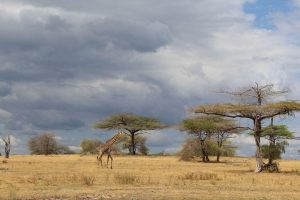Kilimanjaro Safety: Exploring the Risks and Precautions
Mount Kilimanjaro, located in Tanzania, is one of the most popular destinations for climbers seeking to conquer Africa’s highest peak. Standing at 19,341 feet, Kilimanjaro offers a challenging yet rewarding experience for those who dare to summit its majestic peak. However, with any adventure of this magnitude, there are inherent risks that climbers must be aware of in order to ensure a safe and successful trek.
Understanding the Dangers of Climbing Mount Kilimanjaro
While climbing Kilimanjaro is a thrilling adventure, it is not without its dangers. The most common risks associated with climbing the mountain include altitude sickness, extreme weather conditions, and physical exhaustion. Altitude sickness, also known as acute mountain sickness (AMS), can occur when climbers ascend too quickly without allowing their bodies time to acclimatize to the decrease in oxygen levels at higher altitudes. Symptoms of AMS can range from mild headaches and nausea to more serious conditions such as pulmonary or cerebral edema.
Extreme weather conditions on Kilimanjaro can also pose a significant threat to climbers. Temperatures on the mountain can fluctuate drastically, with freezing temperatures at night and scorching heat during the day. Heavy rainfall and snowfall are common occurrences, especially during the rainy season, which can make hiking conditions treacherous and increase the risk of hypothermia.
In addition to the physical challenges of climbing Kilimanjaro, climbers must also be prepared for the mental and emotional toll that such a strenuous trek can take. The mental fortitude required to push through fatigue, discomfort, and uncertainty is just as important as physical fitness when it comes to conquering the mountain.
Precautions for a Safe Climb
To ensure a safe and successful climb of Mount Kilimanjaro, it is crucial for climbers to take certain precautions. One of the most important steps is to choose a reputable tour operator, such as Sunset Africa Safari, who has experienced guides and a proven track record of safety on the mountain. Sunset Africa Safari offers a variety of climbing packages that cater to different skill levels and fitness abilities, ensuring that climbers are properly prepared for the challenges ahead.
It is also essential for climbers to be in good physical condition before embarking on their Kilimanjaro adventure. Regular exercise, including cardiovascular and strength training, can help prepare the body for the physical demands of the climb. Proper nutrition and hydration are also key components of a successful trek, as staying fueled and hydrated can help prevent altitude sickness and fatigue.
In addition, climbers should be prepared for changing weather conditions by packing appropriate clothing and gear, including layers, waterproof outerwear, sturdy hiking boots, and a warm sleeping bag. It is also recommended to bring a first aid kit, sunscreen, sunglasses, and a headlamp for nighttime hiking.
In conclusion, while climbing Mount Kilimanjaro is a challenging and potentially dangerous endeavor, with the right precautions and preparation, it can be a safe and rewarding experience. By choosing a reputable tour operator like Sunset Africa Safari and taking the necessary steps to ensure physical and mental readiness, climbers can increase their chances of reaching the summit and creating memories that will last a lifetime.
For booking requests and more information about climbing Kilimanjaro with Sunset Africa Safari, please contact info@sunsetafricasafari.com.



